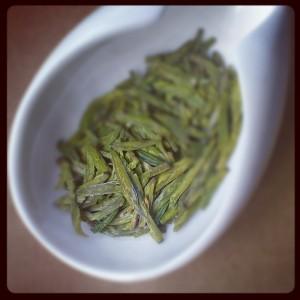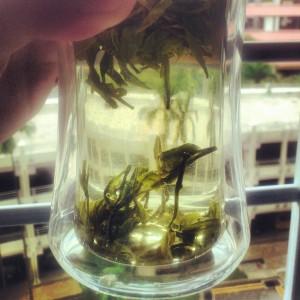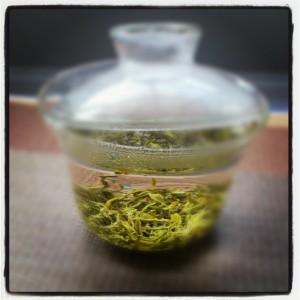Green tea is often marketed as the ‘healthy tea’- a label that gets many up in arms. It’s a label I detest as well; not because I think all teas have the same health benefits- they don’t- but because it insinuates that green tea is not worthy of consumption on its own gastronomic value.
It is true that green teas tend to be more subtle, especially for palates accustomed to black tea- but good ones are sweet, refreshing and uplifting like no other.
Unfortunately, outside of China and Japan, the epicurean value of green tea is scarcely discussed. Here are some possibilities why:
Prevalence of Low Grade Green Tea in the Market

This is further accentuated by the fact that green tea have a shorter shelf life than blacks- stored at room temperature, you can expect a degradation in taste as soon as 6 months after production, rendering an already less than stellar product worse.
Brewing Green Tea like Black Tea
Most of the black teas outside of China are brewed with boiling water- a phenomenon that will render your quality green tea over-stewed, yellowed and with a bitter, brackish taste. This is amplified by the proclivity to brew green tea in china teapots with the lid fully intact.
Because green teas are un-oxidized and tend to be produced from younger more delicate leaves, they should be brewed at lower temperatures, between 75-85°C and for most green teas, steeped with the lid partially covered to prevent yellowing of the liquor and tea. In addition, for delicate tea leaves such as Bi Luo Chun, Mengding Ganlu and Xinyang Maojian, the leaves are added AFTER hot water to prevent the gushing water from spoiling the brittle dry leaves.
Appreciating Green Tea like Black Tea
Green tea is subtler than black tea and by nature there are lesser types of fragrance emitting components in green than black. To think of it as a ‘weaker’ drink though, betray a lack of appreciation of green tea.
Green tea is favored for 3 main qualities-
i) ‘huigan’ or recurring sweetness, a sweetness that wells up in the throat after the liquid is consumed and lingers like a minty feel
ii) refreshing quality- a lively, invigorating taste that refreshes the drinker and
iii) Its ‘cooling nature’ in TCM nomenclature, a foil against the heat caused by weather and diet

Lesser Options from Vendors
Ask most people about the types of Chinese green teas that they are familiar with and its commonly a tossup between “There’s more than One?” or “Dragonwell, Gunpowder and Chun Mei”.
Because of the shorter shelf life of green tea- not to mention the need to store green tea below room temperature- and the reason we will discuss next, vendors are reluctant to offer more choices of green tea. There are approximately a thousand varieties of green tea from China and I doubt most stores carry more than 10.
In Singapore, even the older tea merchants are leery to carry all the green teas listed on Hangzhou’s list of China Top 10 Famous Teas- let alone lesser known but equally delightful ones.
The Southern Chinese Influence
There are 2 main waves of exodus from China. The first was from the end of the 19th century to the 2nd World War. Because Xiamen and Guangzhou were the early ports for migrants escaping from the harsh conditions of China then, the vast majority of Chinese migrants were of Cantonese, Fujian and Chaozhou descent.
The next wave was the pre-1997 Hong Kong return to Chinese rule when the predominantly Cantonese (and to a lesser extent Chaozhou) Hong Kong community begun migrating en masse all over the world.
Consequentially, there would be a disproportion influence of Guangdong and Fujian preferred teas in the world outside of China. That meant Puer and Oolongs would have greater prominence on the international scene.
The Influencers

As newcomers to tea often learn at the feet of masters, inevitably they would be influenced by their ‘tea mentors’ and follow down the same path.
Hence if you look at the more popular informational tea blogs today, Puer and Oolong lovers dominate in numbers and influence. It doesn’t take a Nostradamus to predict the impact.
